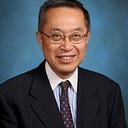Member-only story
No Birth and No Death: Reconciling the Heart Sutra with Theravada Buddhism
A Buddhist friend recently pointed out that the Heart Sutra’s assertion of “no birth and no death” contradicts the Theravada teaching of Dependent Origination and even appears to go against common sense. I want to clarify the meaning of this teaching from the Heart Sutra and demonstrate how it can be reconciled with the Theravada perspective.
The Heart Sutra’s teaching of “no birth and no death” arises from the perspective of Sunyata (emptiness), which closely parallels the Theravada concept of Anatta (non-self). Both teachings point to the same profound truth about existence: that phenomena lack an inherent, independent self. Let’s explore this further:
1. No Birth and No Death through the Lens of Sunyata
In the Heart Sutra, “no birth and no death” reflects the ultimate reality of Sunyata, the emptiness of all things. From this perspective, all phenomena are empty of intrinsic, independent existence. What we perceive as “birth” and “death” is a misperception based on the false belief in a separate, unchanging self. When we understand the emptiness of all phenomena, the dualities of birth and death dissolve because there is no fixed, permanent entity that can be truly born or die.
